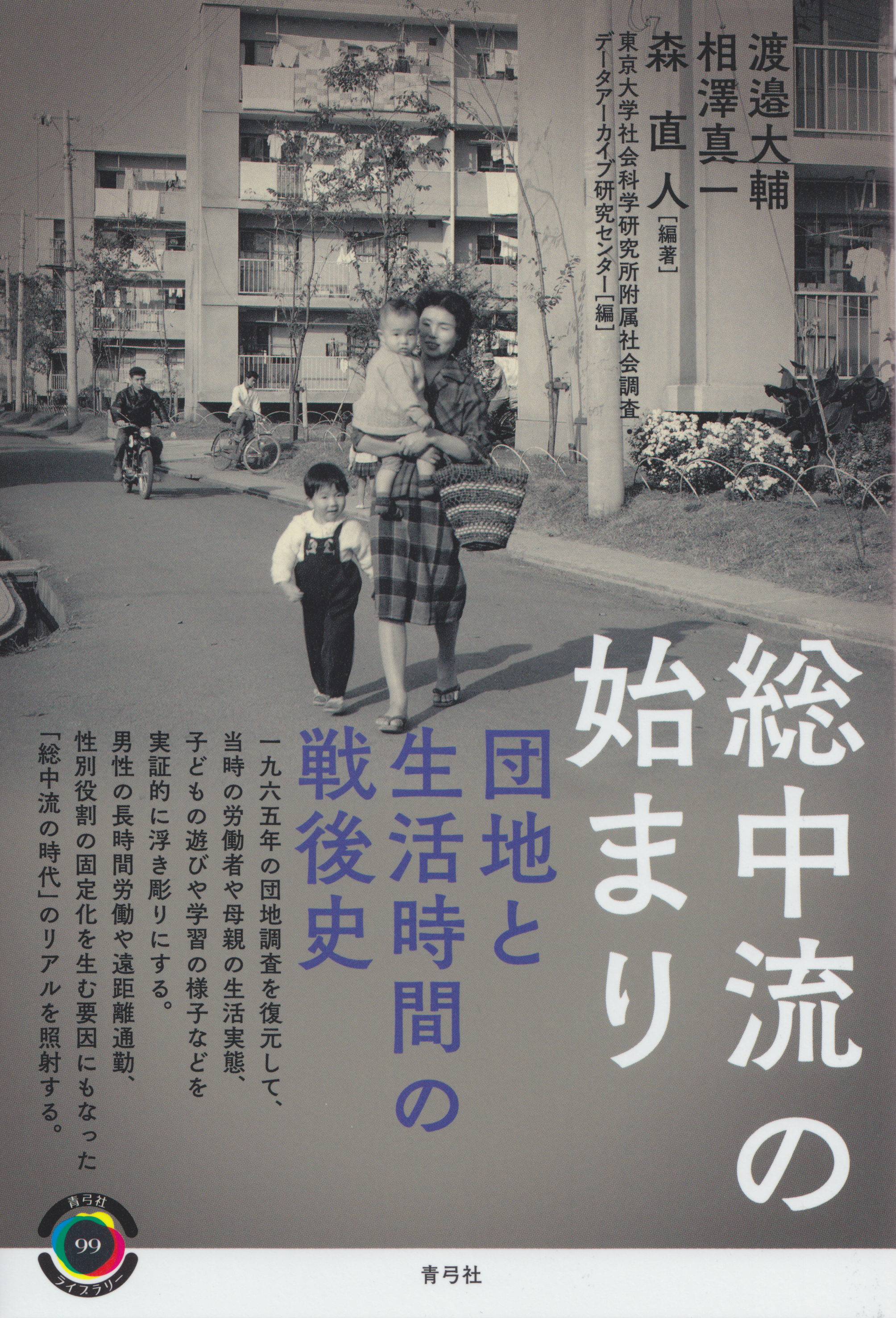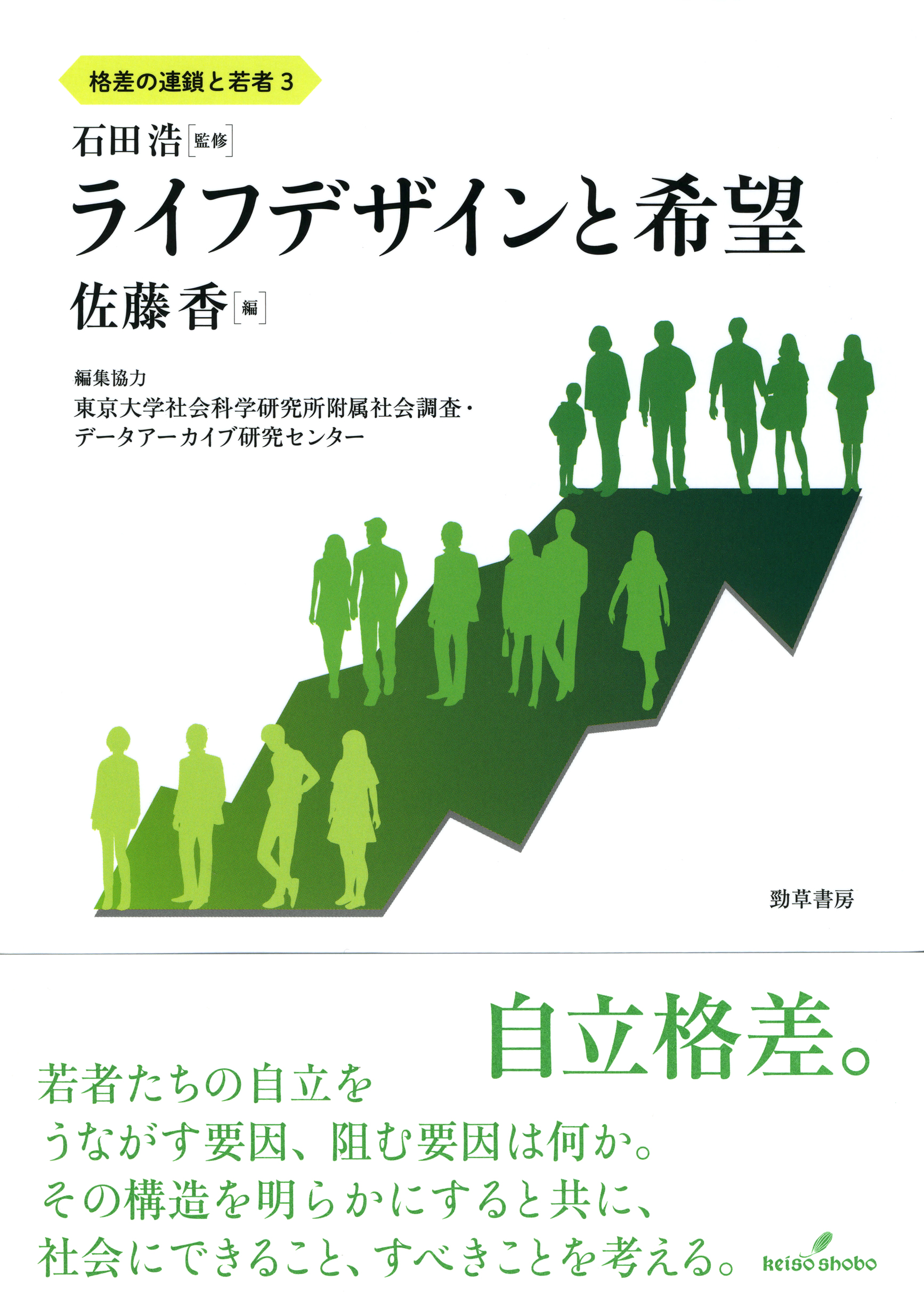
Title
Sō chūryū no hajimari (The Beginnings of a Full-fledged Middle Class - A Post-War History of Housing Complexes and Time Use)
Size
176 pages, softcover
Language
Japanese
Released
November 25, 2019
ISBN
978-4-7872-3462-9
Published by
Seikyusha
Book Info
See Book Availability at Library
Japanese Page
What is your image of Japanese society in the 1960s? While those who actually lived through the era are now in their 60s at least, for most people, the image is like that portrayed in the film series, Ōruweizu: San-chōme no Yūhi (Always: Sunset on Third Street). The film series is set in downtown Tokyo where people lived in close proximity in small, individual houses, but the sixties was also the era in which large housing complexes came to play a major role in people’s lives. Based on data compiled from a 1965 time use survey at housing complexes in Kanagawa Prefecture, this book examines the newly emerging lifestyle of the complex residents.
The time use survey explores when, where, and what people were doing in the 24-hour period of a day. The University of Tokyo’s Institute of Social Science has an archive of survey questionnaires from over 50 years ago. Our research group restored and analyzed the data from a “Survey on the Living Conditions of Housing Complex Residents” carried out by a research team that included Ujihara Shōjirō and Kobayashi Ken’ichi. Each of the paper questionnaires was photographed and converted into a PDF, care being taken not to damage the fragile paper. It took considerable time and effort to digitalize the survey data for 1,052 households of parents and children living in six different housing complexes.
We began our work in 2014 with the help of the Institute of Social Science’s Center for Social Research and Data Archives (CSRDA). Within the CSRDA, the Secondary Data Analysis Workshop provides support for joint research projects such as ours and has contributed to diverse research outcomes through the secondary analysis of social survey data.
https://csrda.iss.u-tokyo.ac.jp/secondary/kobo/
The completed data has been made available through the CSRDA archives since July 2020. Interested researchers and students can apply for the data and make their own analyses.
https://ssjda.iss.u-tokyo.ac.jp/Direct/gaiyo.php?lang=jpn&eid=1311
Among the working population, the proportion of agricultural workers plummeted from 30% in 1960 to 18% in 1970. At the same time, black-and-white television penetration, which was about 45% in 1960, increased to 95% over the next decade. In the same way, washing machine use went up from 41% to 91% and refrigerators, from 10% to 90%. The sixties was when a new lifestyle became widespread at a national level in which workers in the non-agricultural manufacturing and service industries lived in urban areas, used home appliances for household chores, and watched TV in their leisure time.
This kind of “middle class” lifestyle was typical in the housing complexes of the day. There was also a clear division of gender roles with husbands working outside of the home and wives keeping house and caring for children. We decided to name this book Sō chūryū no hajimari (The Beginnings of a Full-fledged Middle Class) because we feel the sixties marked the emergence of Japan’s middle class. We urge those of the younger generation who are unfamiliar with the sixties to read through this report for a “cross-cultural experience.”
(Written by SATO Kaoru, Professor, Institute of Social Science / 2020)



 Find a book
Find a book


